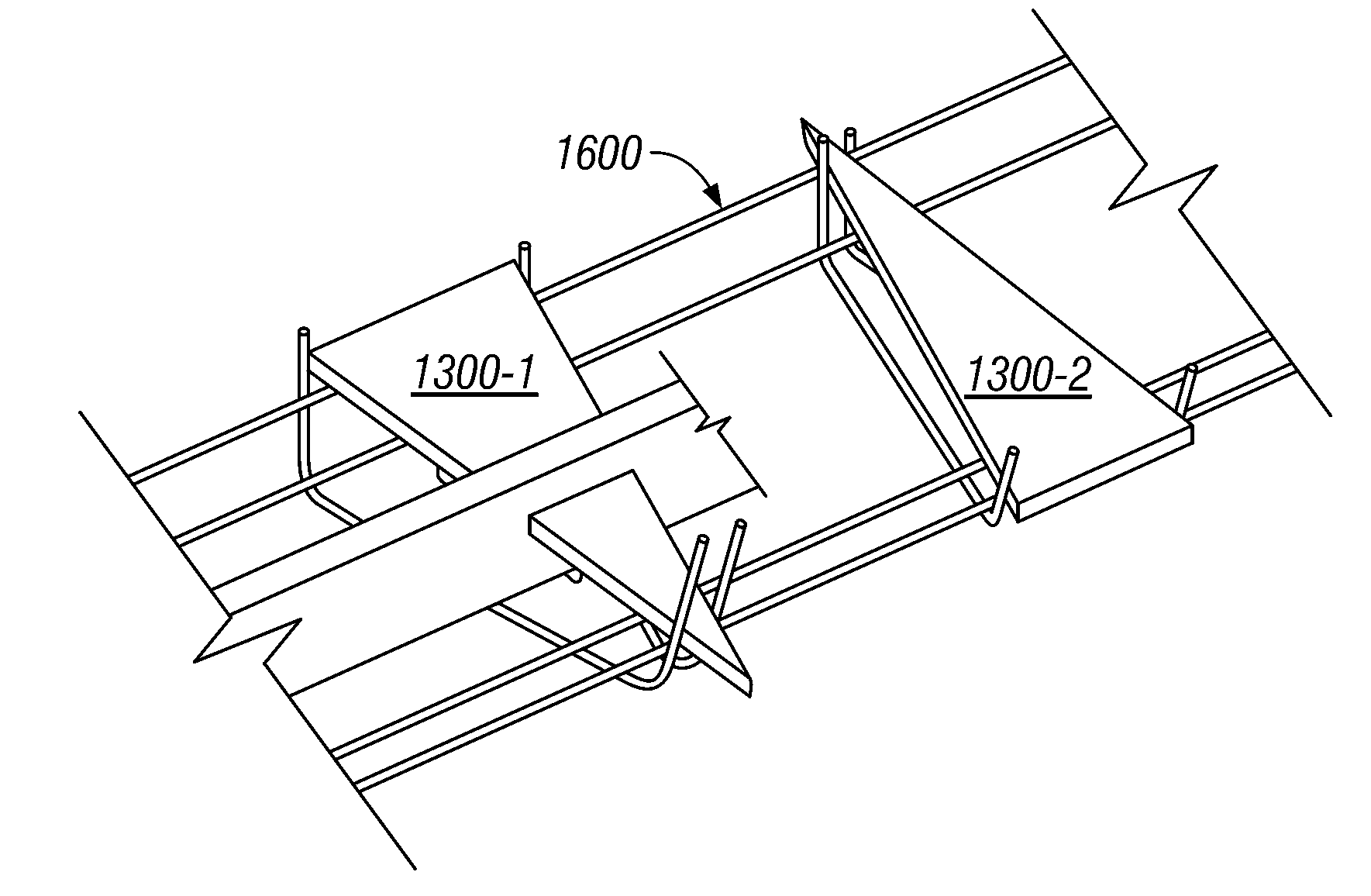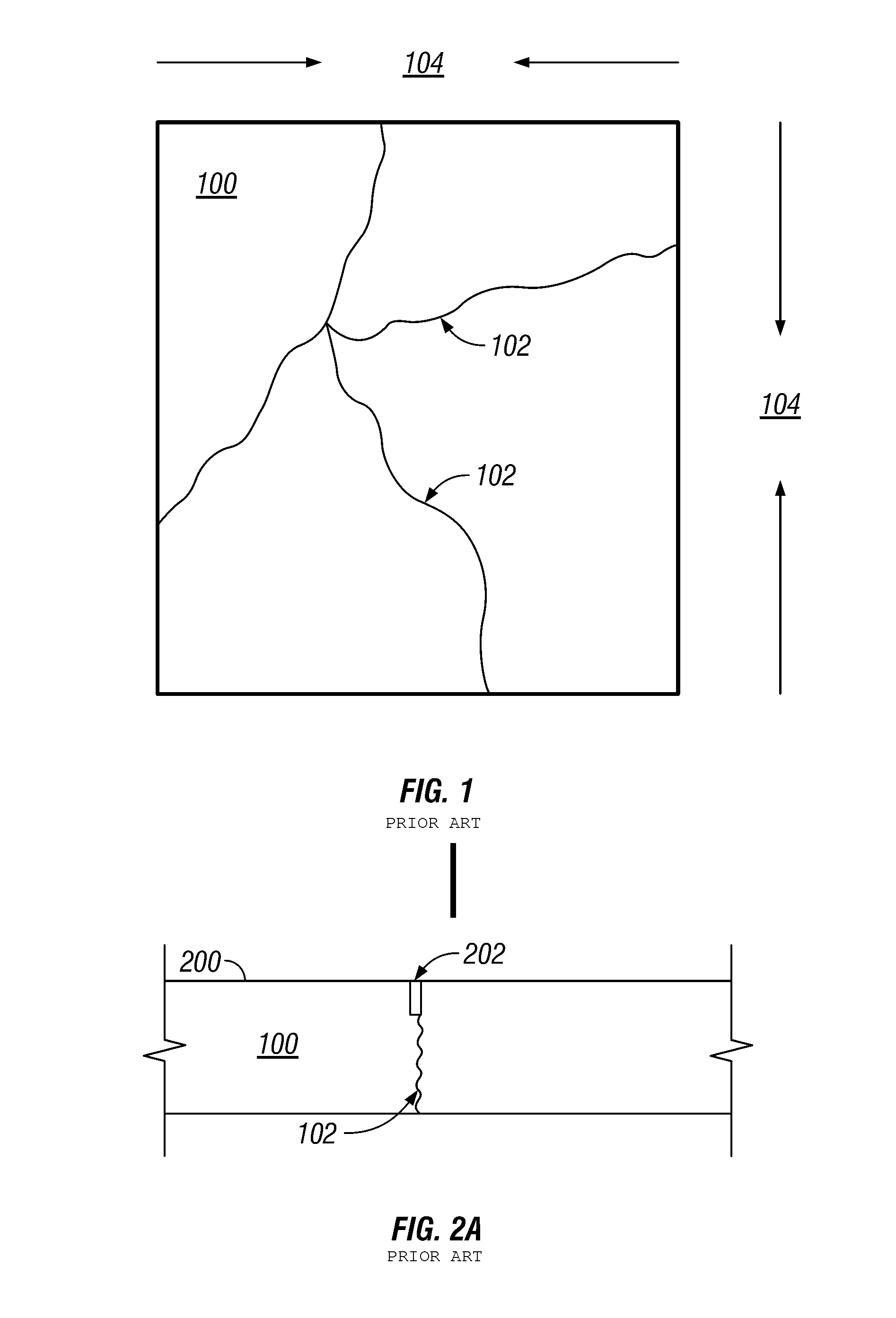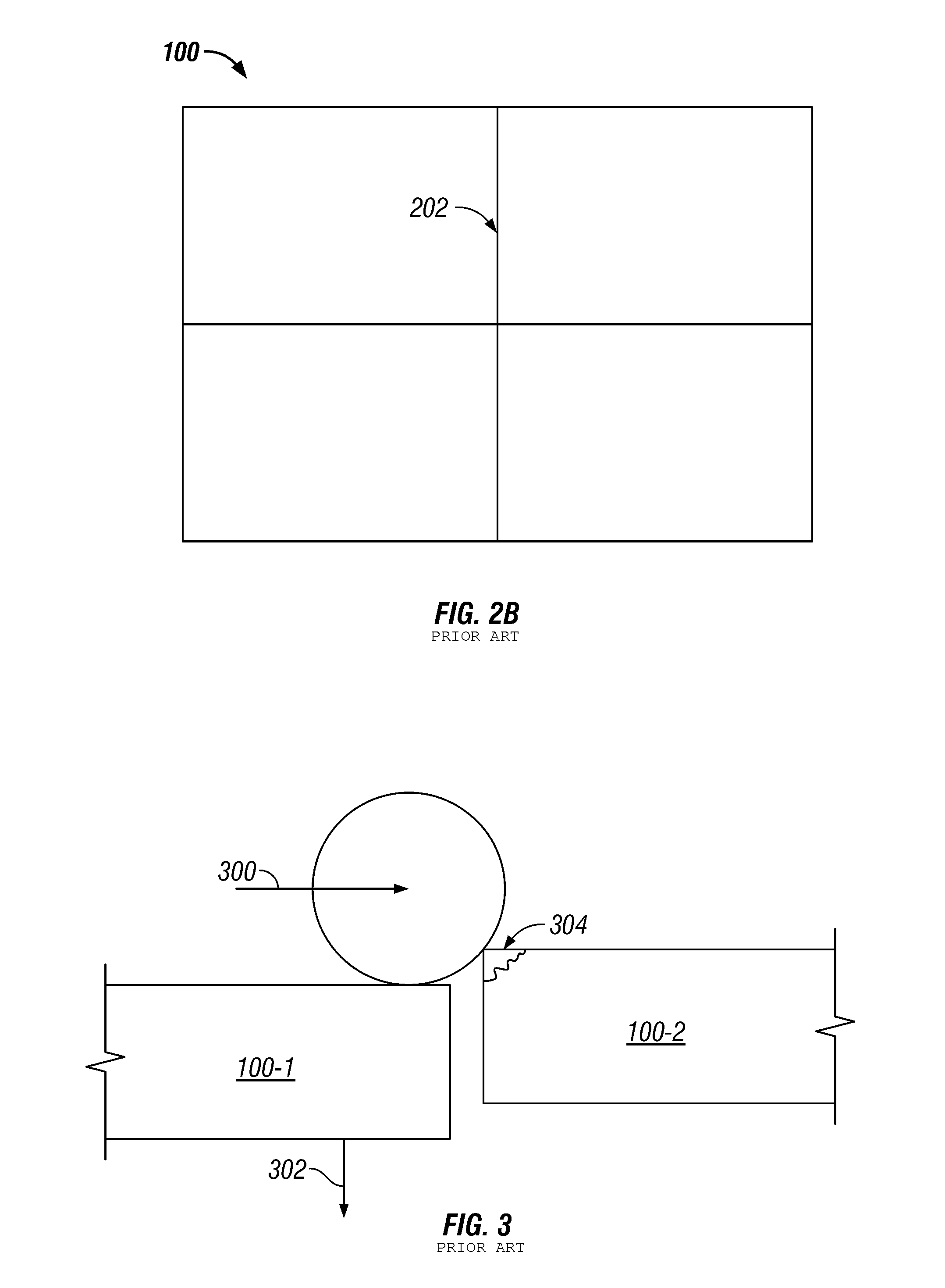Load transfer plate for in situ concrete slabs
a technology of in situ concrete and transfer plate, which is applied in the direction of resiliently-mounted floors, walls, and ways, etc., can solve the problems of reducing the life span of concrete, random cracks, and undesired addition of costs
- Summary
- Abstract
- Description
- Claims
- Application Information
AI Technical Summary
Benefits of technology
Problems solved by technology
Method used
Image
Examples
Embodiment Construction
[0042]Referring to FIG. 13, in accordance with an illustrative embodiment of the invention, a tapered load plate, such as tapered load plate 1300, may be used to transfer loads across a joint between adjacent concrete floor slabs. The tapered load plate 1300 may have top and bottom surfaces that are tapered, substantially planar, and substantially parallel to one another. A triangular-shaped tapered top surface 1302 and two generally rectangular-shaped side surfaces 1304 and 1306 are shown in FIG. 13. The top and bottom surfaces may taper from approximately 4 inches wide to a narrow substantially pointed end 1308 over a length of approximately 12 inches. As will be apparent, other suitable tapered shapes and / or other suitable dimensions may also be used.
[0043]A tapered load plate 1300, in accordance with an illustrative embodiment of the invention, advantageously accommodates misalignment of a saw cut for creating a control joint. Misalignment up to an angle substantially equal to t...
PUM
 Login to View More
Login to View More Abstract
Description
Claims
Application Information
 Login to View More
Login to View More - R&D
- Intellectual Property
- Life Sciences
- Materials
- Tech Scout
- Unparalleled Data Quality
- Higher Quality Content
- 60% Fewer Hallucinations
Browse by: Latest US Patents, China's latest patents, Technical Efficacy Thesaurus, Application Domain, Technology Topic, Popular Technical Reports.
© 2025 PatSnap. All rights reserved.Legal|Privacy policy|Modern Slavery Act Transparency Statement|Sitemap|About US| Contact US: help@patsnap.com



